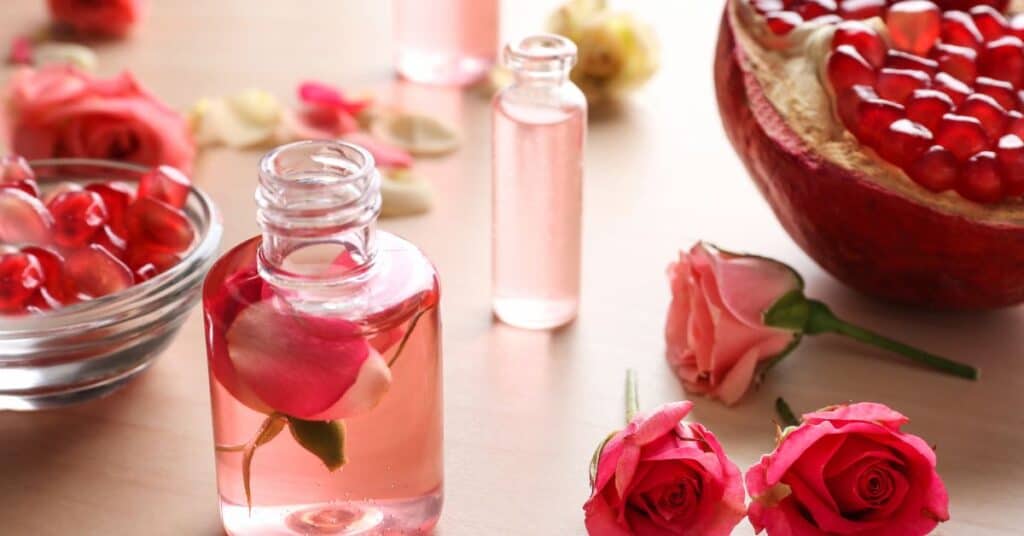Table of Contents
- How Does Scented Soap Affect The Vagina?
- What Causes A Yellowish Discharge?
- How To Treat Yellow Discharge?
- How To Prevent Yellow Discharge?
- Conclusion
Can scented soap cause yellow discharge? Yes! Particularly, douching increases your chances of abnormal vaginal discharge in the genital area.
Vagina discharge is a normal and healthy part of the female reproductive system. It helps to keep the vagina clean, moist, and protected from infections.
The color, consistency, and amount of discharge can vary depending on the stage of the menstrual cycle, hormonal changes, pregnancy, age, and other factors.
However, the discharge can sometimes change to indicate a problem, such as an infection, vaginal pH imbalance or irritation.
In this blog post, I will examine the factors that contribute to changes in vaginal discharge and whether scented soaps play a role in this phenomenon.
Let’s Start!
How Does Scented Soap Affect The Vagina?
If you have been washing with scented soap, it’s time to change. The use of fragrant soaps in the genital area can potentially disrupt the natural balance of the vagina.
As a general rule of thumb, you should use unscented soap on parts of your body that do not grow hair.
These areas are generally more sensitive and prone to infection.
Unscented soap is healthier and will not contribute to the above health risks.
One of the main ingredients in scented soap is fragrance, a mixture of chemicals that gives a product a particular smell.
Yellowish discharge is a part of different vagina discharge like gray, white, and creamy with lousy odor, pinky discharge, and a lot more.
However, my focus point in this article is yellowish discharge.
It is funny how scent soap and products with fragrance are one of the causes of every abnormal vagina discharge.
Fragrance can contain hundreds of different chemicals, many known to be harmful to human health. Fragrant soap can cause:
- Worsen your vaginal odor
- Increase your chance of yeast infection
- Irritate and inflame the sensitive skin
- Bacterial vaginosis
- Disrupt the vaginal pH
Another problem with scented soap is that it can mask the body’s natural smells.
This can make it difficult for women to detect when they have an infection or when they are starting to ovulate.
What Causes A Yellowish Discharge?
Vagina discharge is common after puberty. One of the signs of an abnormal discharge is a yellow-green color.
It will vary in amount, color, smell, and consistency depending on whereabouts in your menstrual cycle, says DR Simi Adedeji.
It also depends on whether you are pregnant, ovulating, or sexually aroused; it changes all the time.
So what causes the changes in color or odor to be what you are not expecting?
Bacterial vaginosis (BV): This is a condition where the normal balance of bacteria in the vagina is disrupted, leading to an overgrowth of harmful bacteria.
BV can cause a thin, watery, yellow, or gray discharge with a fishy odor, and in some cases, it might be odorless.
Typically, the vagina discharge should be clear or milky with a slight odor.
It also causes itching, burning, and irritation in the vagina.
BV can be triggered by sexual activity, douching, using scented soaps or feminine products, or wearing tight or synthetic underwear.
Sexually transmitted infections (STIs): Some STIs, such as gonorrhea, chlamydia, and trichomoniasis, can cause a yellow or green discharge that may be thick, frothy, or pus-like.
Trichomoniasis vaginalis is a STI that characteristically gives the yellow-green vaginal discharge And is the most common non-viral STI.
In the United States, the CDC estimates more than two million trichomoniasis infections in 2018 compared to chlamydia and gonorrhea.
This is a microorganism or parasite that causes the STI that is called Trichomoniasis, which is usually caused by having sex with someone who is infected.
50% of women who are infected by trichomoniasis don’t have any symptoms, and of course, if you don’t have any symptoms and you are having unprotected sex, you are spreading it.
And even when symptoms do occur, they are similar to other STIs, which makes it difficult to diagnose.
However, when symptoms occur, you get that frothy, yellowish-green, offensive smell, burning and stinging when passing urine, soreness around the lips of the vagina, and itching.
Pelvic or lower abdominal pain, fever, or soreness in the genital area.
Pelvic inflammatory disease (PID): This is a severe complication of untreated STIs, where the infection spreads from the vagina to the uterus, fallopian tubes, and ovaries.
PID can cause a yellow or green discharge with a foul odor.
It can also cause severe pain in the lower abdomen or pelvis, fever, chills, nausea, vomiting, or irregular bleeding.
PID can lead to infertility, ectopic pregnancy, or chronic pelvic pain if not treated promptly.
Hormonal imbalance fluctuations in the body’s hormone levels due to menstrual circles, pregnancy, and menopause can lead to yellowish discharge.
Cervicitis is the inflammation of the cervix. It has both infectious causes (like chlamydia, gonorrhea, and genital herpes) and non-infectious causes (like contact dermatitis, autoimmune diseases, and intravaginal devices like IUDs).
Often, cervicitis will not cause any symptoms at all. When it does, there may be a persistent, abnormal vagina discharge that is:
Whitish, yellow, or greenish
Foul-smelling
How To Treat Yellow Discharge?
The treatment of yellow discharge depends on the underlying cause. Some of the common treatments are:
Antibiotics: These are prescribed for bacterial infections, such as BV, gonorrhea, chlamydia, and PID.
Antibiotics can be in the form of gel, cream, or tablet. And it can be taken orally or applied vaginally, depending on the type and severity of the infection.
It is crucial to complete the entire course of antibiotics and avoid sexual contact until the infection is cleared.
Note that you and your sexual partner in the last four weeks need to take antibiotics prescribed by a sexual health or genitourinary medicine clinic.
Antifungals: These are used for yeast infections caused by a fungus called Candida.
Antifungals can be taken orally or applied vaginally, either as a cream, suppository, or tablet.
Antifungals can help to relieve the symptoms and clear the infection within a few days.
However, some women may experience recurrent yeast infections that require longer or more frequent treatment.
Avoid scented products.
Fragrances found in some personal care products can irritate the vagina and alter the levels of healthy bacteria in your vagina.
Fragrances found in feminine hygiene sprays, soap, essential oils, bubble baths, and douches should be avoided.
Antiprotozoals: These are used for trichomoniasis, caused by a parasite called Trichomonas vaginalis.
Antiprotozoals are taken orally, usually as a single dose or a short course.
They can help to eliminate the parasite and the symptoms of the infection.
Sexual partners may also need to be treated to prevent reinfection.
How To Prevent Yellow Discharge?
Some of the ways to prevent yellow discharge and maintain a healthy vaginal environment are:
Use condoms or dental dams whenever you have sex, especially with new or multiple partners.
This can help to lower the likelihood of contracting or spreading STIs that cause yellow discharge.
Get tested for STIs on a regular basis and seek treatment as soon as you notice any symptoms.
Avoid douching and scented products: Douching is the practice of washing or rinsing the inside of the vagina with water or other fluids.
This can disrupt the natural balance of bacteria and pH in the vagina, making it more prone to infections and irritation.
Scented soaps, sprays, wipes, or feminine products can also cause allergic reactions or inflammation in the vagina.
Avoid using these products and stick to plain water or mild, unscented soap to clean the external genital area and the vulva. Clean the vulva daily with water.
Wear breathable underwear: Choose underwear made of cotton or other natural fabrics that allow air to circulate and keep the vaginal area dry.
Avoid wearing tight or synthetic underwear that can trap moisture and heat, creating a favorable environment for growing bacteria and yeast.
Change your underwear daily and after sweating or exercising.
Eat a balanced diet and stay hydrated: Eating a balanced diet with plenty of fruits, vegetables, whole grains, lean protein, and healthy fats helps boost your immune system and prevent infections.
Drinking enough water can also help to flush out toxins and keep your body hydrated.
Some foods, such as yogurt, garlic, cranberries, and apple cider vinegar, may also have beneficial effects on vaginal health by promoting the growth of good bacteria and preventing the growth of harmful bacteria and yeast.
Conclusion
While scented soaps may not be a direct cause of yellow discharge, their use in the genital area can contribute to irritation and changes in the vaginal environment.
It’s crucial to pay attention to any persistent changes in discharge and seek medical advice if needed.
Opting for gentle, fragrance-free cleansers designed for sensitive areas can be a proactive step towards maintaining optimal vaginal health.
Remember, your body’s natural balance is delicate, and it’s vital to prioritize products and practices that support rather than disrupt it.



